There is a stunning collection of medieval ivories in the Victoria and Albert Museum. Medieval ivories were extremely valuable and high status items; the ivory itself generally came from elephants in India or North Africa although walrus tusks could be obtained by trading with the Vikings. I was privileged to see the collection during our recent trip to London. Here are four of the pieces I was privileged to see.
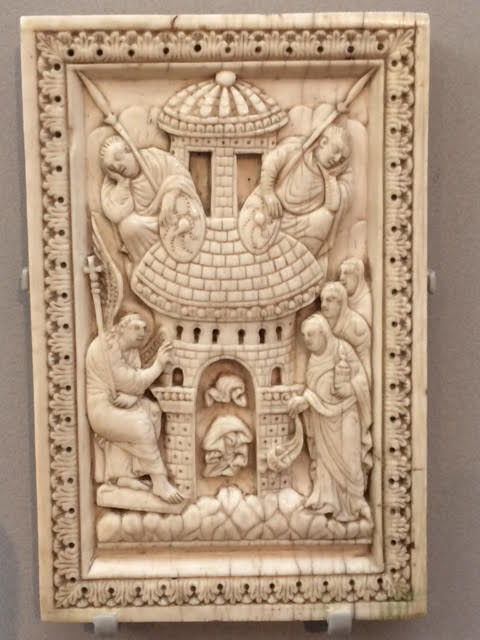
This ivory depicts the women coming to the Tomb of Christ early on the morning of Sunday. They discover that the stone is rolled away from the tomb’s entrance, revealing that the tomb itself is empty. The empty burial cloths of Jesus are shown, as is the angel who tells them, “He is not here–he is risen! Go and tell his disciples!” The sleeping guards are also seen here, oblivious to what is happening. The tomb itself looks like the tomb within the Church of the Holy Sepulcher in Jerusalem. This ivory was probably carved at the Benedictine abbey of St Gallen, an important center of manuscript and ivory production and was probably carved AD 900-950. (photo by S. Morris)
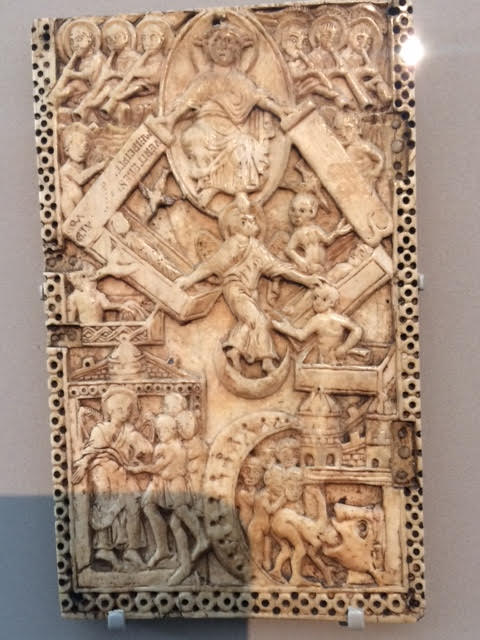
This ivory shows Christ enthroned in glory as Judge of the living and the dead at the Last Day. The dead of all generations are rising from their graves as angels blow trumpets above, calling them to judgement. The damned are shown being consumed by the monster that is Hell (lower right) as Christ welcomes the righteous into the heavenly Jerusalem (lower left). The Hell monster is shown outside the city walls of the heavenly Jerusalem, just as the valley used as a burning trash heap that gave birth to the stories of Hell is outside the walls of the earthly Jerusalem. (photo by S. Morris)
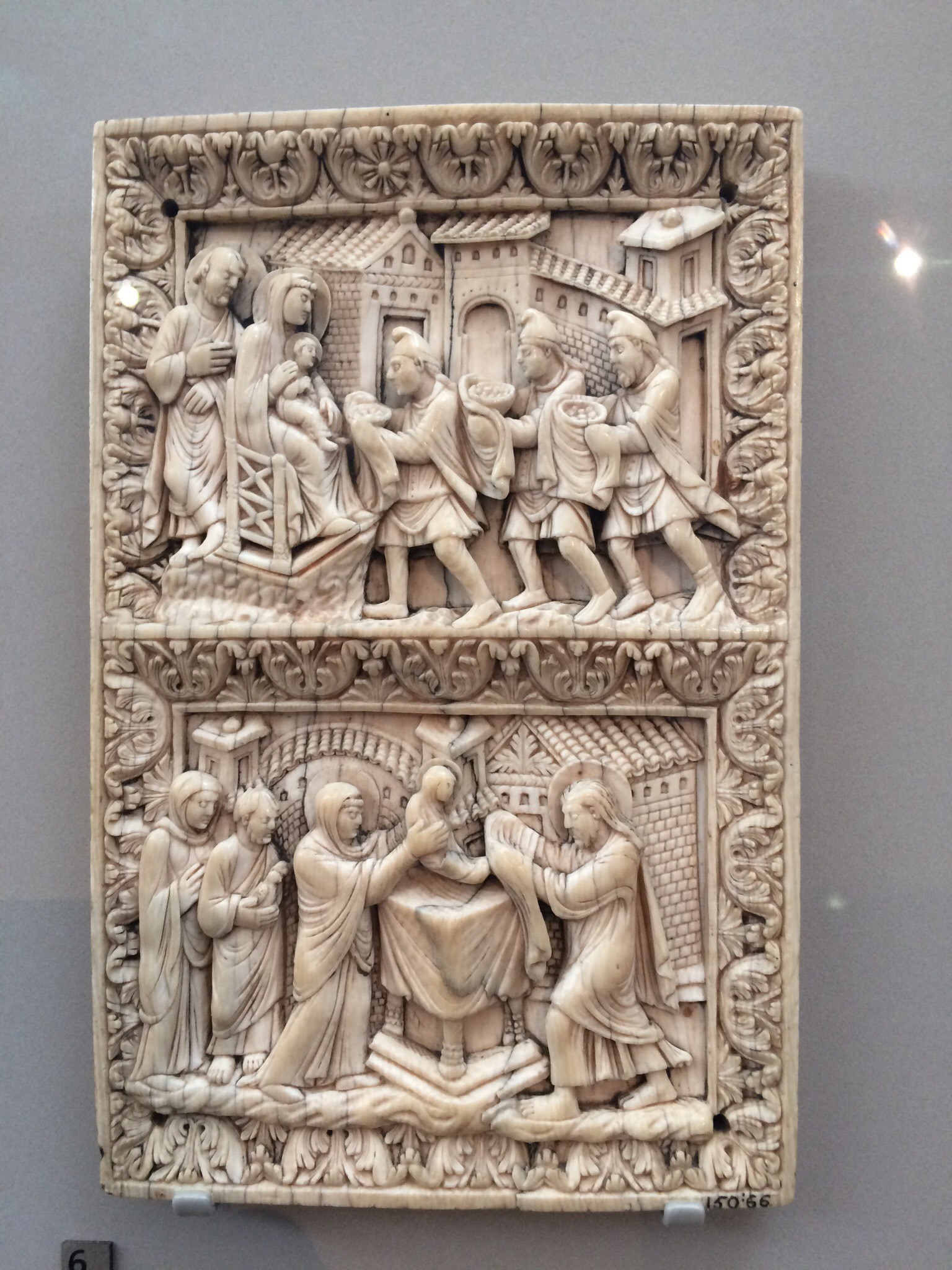
The top scene depicts the arrival of the Magi bringing gifts–gold, frankincense, and myrrh–to the Mother of God and the Christ Child as St. Joseph stands behind them. The bottom scene depicts the Mother of God presenting Jesus in the Temple when he was 40 days old (celebrated on February 2). Simeon the elder, prepared to wrap Jesus with a cloth, promises Mary that “a sword will pierce [her] heart also.”
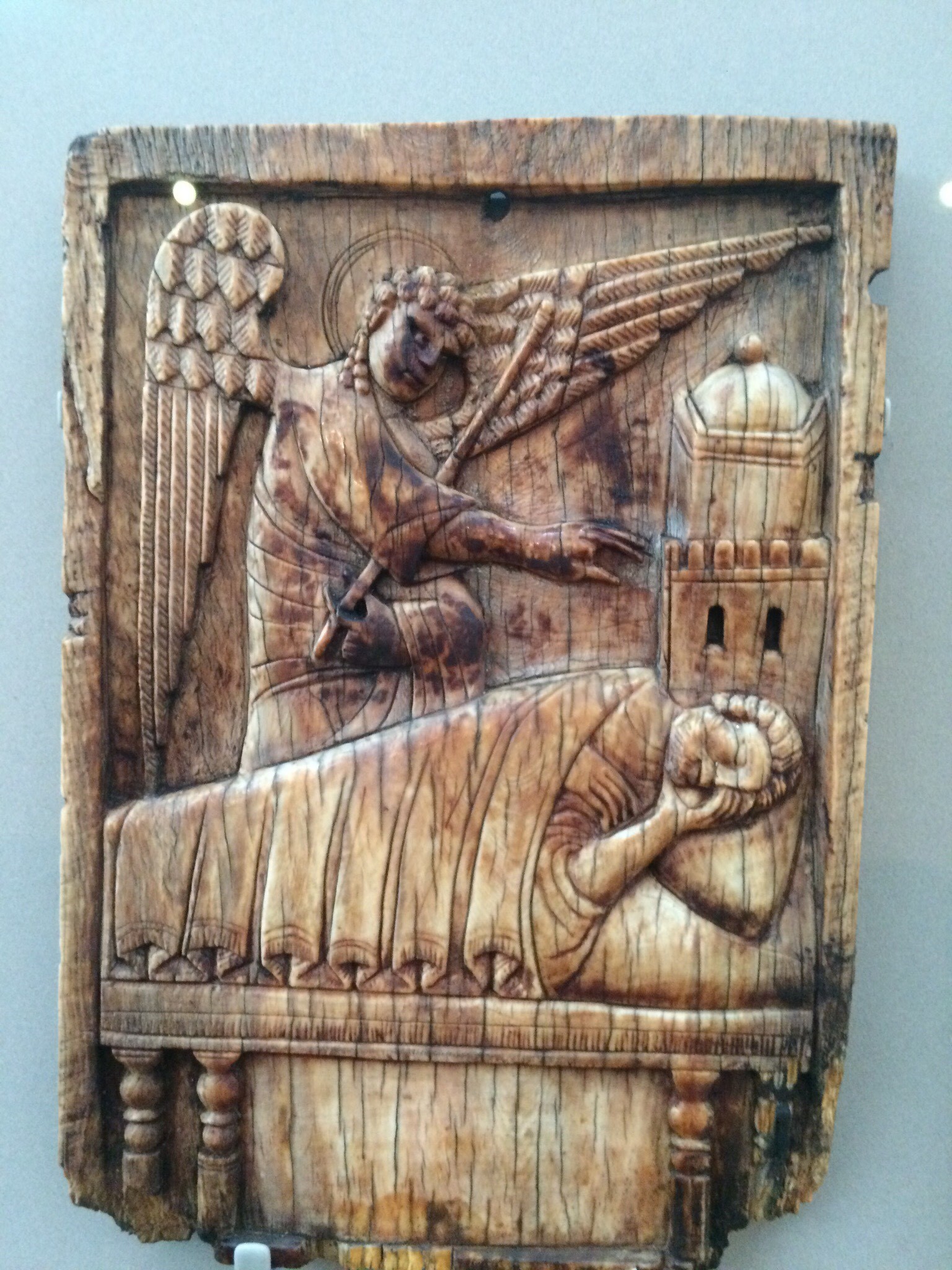
An angel blesses a person as they sleep, probably giving them a dream-message from God or protecting them from nightmares. The building in the background might be the Church of the Holy Sepulcher in Jerusalem which might indicate that the person is sleeping in the church in hopes of being healed of an illness and the angel is there to heal them.
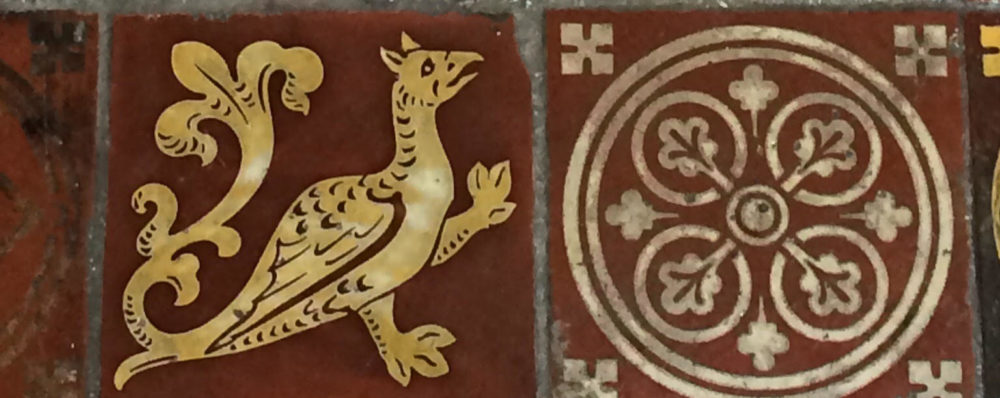
Stunning ! I enjoyed this and plan to further explore it.
Aleathia: Glad that you enjoyed them as much as I did.
Perhaps the last ivory depicts the vision of an angel to Joseph in a dream.
Peter: That could well be!